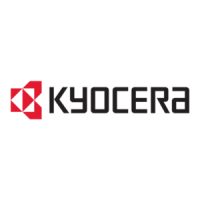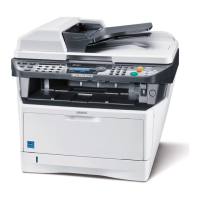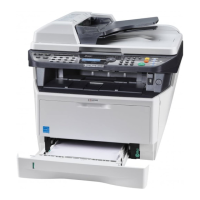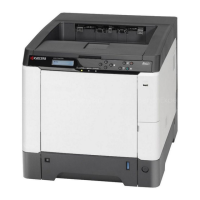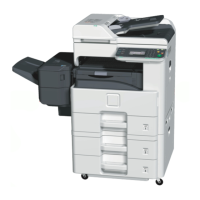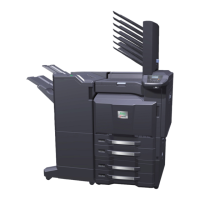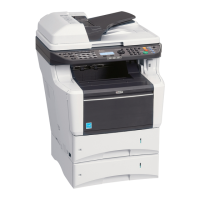Symbol Set
4-13
Figure 4. 1. Character dot pattern
The pattern is 13 dots high and 13 dots wide. The pattern is encoded as a series of 16-bit
words. If necessary, blank cells may be added on the right to make the width a multiple
of 16. For this reason, the three extra columns appear on the right (see the figure above).
Each 16-bit word is encoded with three characters, representing the most significant six
bits, the next six bits, and the least significant four bits, respectively, as shown in Defin-
ing Fill Patterns in Chapter 2.
To obtain the character codes, divide the word into sections of six, six, and four bits and
calculate the numerical value of each section (referred to as x, y, and z, respectively),
treating it as a binary number in which the white dots are zeros and the black dots are
ones. Then add an offset of 64 to the values of the six-bit sections and 48 to the values of
the four-bit sections. The result is the ASCII code of the character representing that sec-
tion (x, y, and z, respectively). Refer to the example of dot map and numerical derivation
in Defining Fill Patterns in Chapter 2. The procedure for the numerical derivation is
identical to creating fill patterns for XPAT.
Six-bit sections consisting of all black dots, as in the middle row of this symbol, are a
special case. They encode by using the ASCII code 127, which is the unprintable delete
code. Character 47 (/) may therefore be used instead.
The resolution may be specified for 300 or 600 (dpi) only in printing system models that
support the 600-dpi resolution printing. LDFC generated 300 dpi characters may print
when the default resolution is 300 or 600 dpi. It is not possible for 600 dpi LDFC gener-
ated characters to print at 300 dpi.
The bit map data proceeds from left to right across the character pattern, then from top to
bottom. The data can be formatted by inserting line-feeds, but not spaces. If we assign
this character an x-offset of 0 and a y-offset and cell width of 500 micro dots each, and
make it ASCII code 42 (*) of font 1000, it creates the following LDFC command:
!R! LDFC 1000, 42, 13, 13, 500, 0, 500, 250, 0;
@’0@’0Ap0Ap0Cx00|At0//J80|At0Cx0Ap0Ap0@’0@’0;
UNIT C;
BOX 4.35, 0.75, L;
FONT 1000;
TEXT ’ * * * * * * * * ’;
EXIT;
Symbol Set
The page printing system can produce sets of alphabet, numeric, and symbol characters.
These sets, with each character assigned to a particular code, are known as symbol sets.
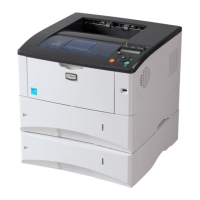
